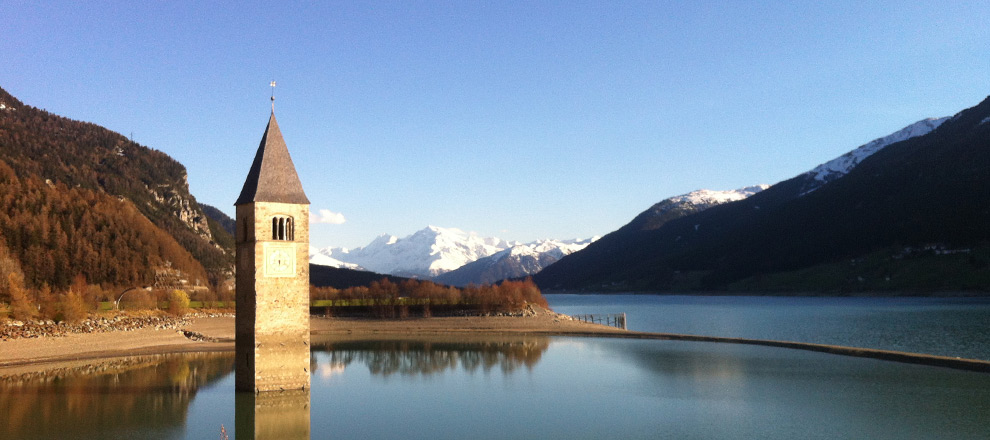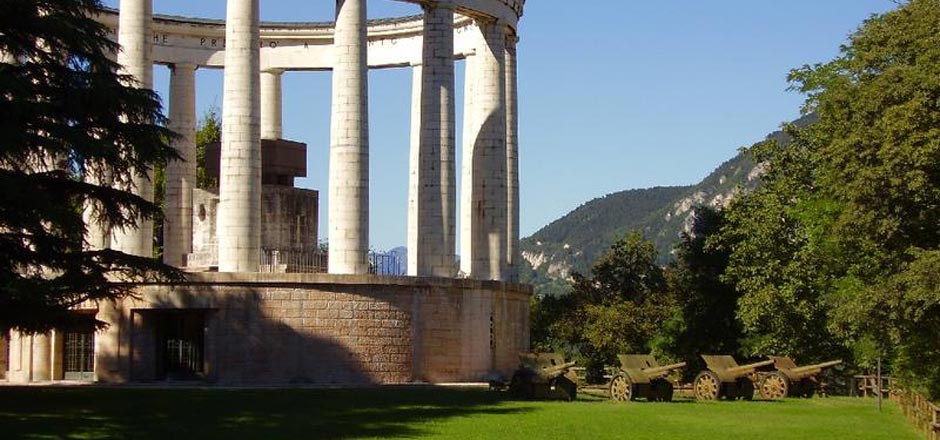History of the old Roman road
The only imperial state road over the Alps – the Via Claudia Augusta – was built almost 2000 years ago by the Romans. After two thousand years of history, the Via Claudia Augusta, the ancient Roman road, which led from the Po River lowlands (Altinum near Venice) and the Adriatic Sea all the way to the Danube, is enjoying a renaissance. Originally, the road served for military purposes. Later on it became the most important trade route from north to south. With the end of the conflicts and a finally united Europe, the Via Claudia Augusta has become a bridge which unifies mixed cultures, living spaces and emotions. It is a symbolic route that spans the bordering regions and traditions, marked by more human, youthful and ecologically sustainable tourism. Also leisure time cyclists, be it young or old, can do this fascinating crossing of the Alps with splendid views. This tour is ideal to leave your watch at home and to admire places and landscapes from a new perspective.
An exciting and wonderful time journey
More than 500 km that can be done on a bicycle or even by foot. Fairytale castles, artistic and architectonic masterpieces, impressive landscapes, and many tasty regional products, which are prepared according to traditional or new Roman recipes, will be your companion on the tour.
In 15 B.C., Emperor Augustus appointed his step-sons Tiberius and Drusus to conquer the as yet unconquered areas in the Alps and the northern areas at the foothills of the Alps between Inn River and the southern Black Forests. For the development of the province Rhaetia, the road from Feltria/Feltre over Tridentum (Trento) and Resia Pass, the upper Inntal Valley and Fernpass to Lech was realised. The origins of the Via Claudia Augusta date back to the Celts who lived in the alpine foothills long before the Romans started their expansion policy. The road was finally finished, made accessible to carts, renewed and extended all the way to the Danube by Emperor Claudius. In 15/16 B.C, Nero Claudius Drusius made the later Via Claudia Augusta accessible to the increasing traffic. His son Claudius extended the road from 41-54 A.D. not only for military reasons, but also as a trade route. He named the road after his father: Via Claudia Augusta. It was Emperor Claudius who ordered the improvement of the Via Claudia Augusta to a real road over the Alps to connect the Adriatic port Altinum with the Danube. The ancient culture and trade road of the Roman Empire is revived along the Via Claudia Augusta cycling route.
During the first two centuries A.D., the Via Claudia Augusta was the most important connection between the Adriatic/Po plain and the western foothills of the Alps. The road was of special importance for the Roman Reichspost (postal service). Over the course of the years, more and more infrastructure was developed along the route. Guesthouses and horse exchange stations, which developed into real towns during the course of the years. Today, you can still follow the traces of the stagecoach and you also find restaurants where you can taste real Roman dishes.
The history of the Via Claudia Augusta can be noticed everywhere along the route. Two military milestones are the only obvious sources with regard to the Via Claudia Augusta. One of them was found in Rablá in the vicinity of Merano (South Tyrol) and another at Cesiomaggiore near Feltre (Belluno-Venice). Furthermore, a few years ago a third milestone was discovered in Nauders at Resia Pass, the inscription can however not be read anymore.


